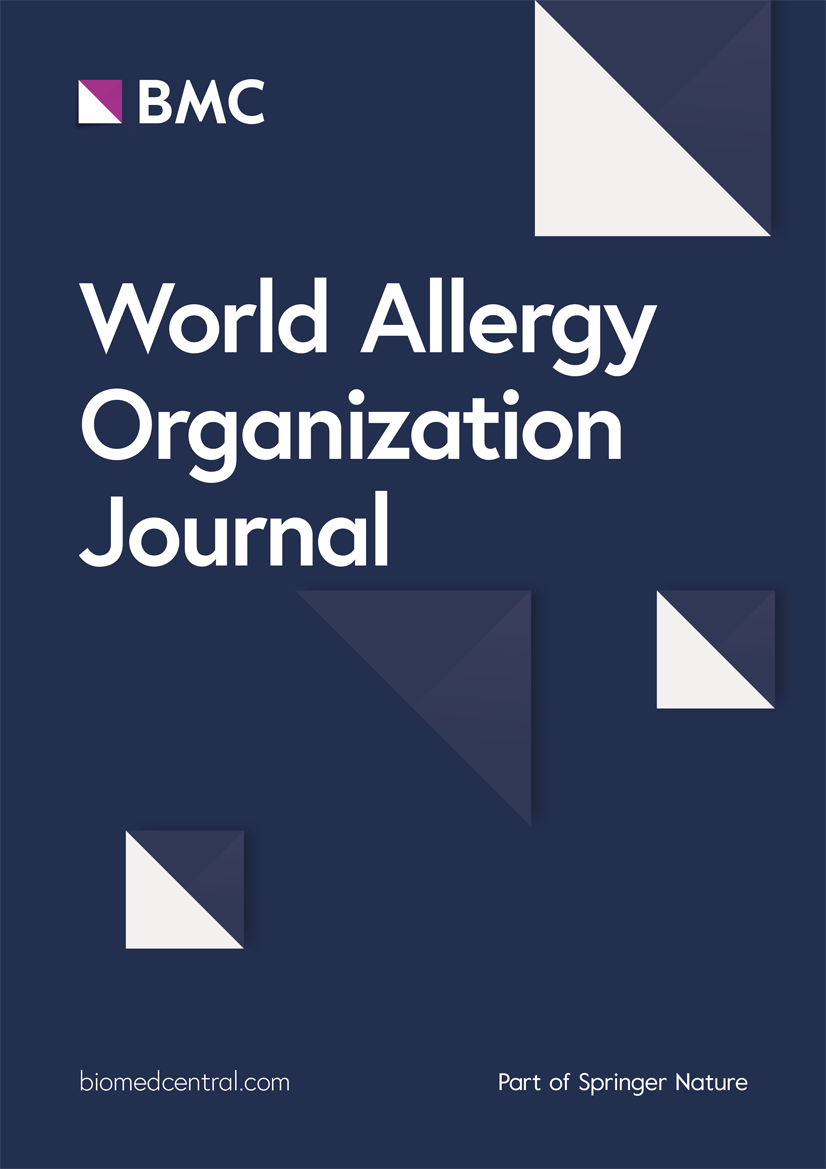高蛋白饮食通过调节Th2偏倚的细胞因子环境,增加了小鼠过敏致敏的风险,但没有增加哮喘的风险
IF 4.3
2区 医学
Q2 ALLERGY
引用次数: 0
摘要
不同营养物质在过敏性致敏中的作用尚不清楚。在这项研究中,我们旨在确定高蛋白(HP)饮食对小鼠过敏致敏、细胞因子谱和哮喘的影响。方法7 ~ 8周龄雌性BALB/c小鼠分别饲喂正常(ND)和HP日粮,经腹腔注射卵清蛋白致敏,然后鼻内注射。通过测定抗卵清蛋白(OVA) IgE、IgG1和IgG2a抗体检测过敏致敏性。用多重ELISA法检测刺激后脾细胞上清液细胞因子水平。通过测量支气管肺泡灌洗液中细胞总数和分化数,以及通过组织学检查测量支气管粘液生成、杯状细胞增生和血管周围和支气管周围炎症严重程度评分来检测气道炎症。结果与ND组相比,HP组小鼠体重显著增加,ova特异性IgE和IgG1抗体水平显著升高(p值分别为0.002、0.007和<;0.001)。此外,与ND组相比,他们在培养的脾细胞上清液中表现出选择性Th2偏倚,表现为更高的IL-4和IL-6水平(p值分别为0.001和0.011)和更高的Th2与Th1细胞因子比率。然而,两组之间的气道炎症水平是相似的。结论shp饮食通过增加Th2细胞因子增加了过敏致敏的风险。应努力确定饮食中不易致敏的蛋白质的上限。饮食对健康的影响应继续成为研究的重点,以建立最佳的健康和弹性。本文章由计算机程序翻译,如有差异,请以英文原文为准。
High protein diet increases the risk of allergic sensitization but not asthma in mice through modulation of the cytokine milieu toward Th2 bias
Introduction
The role of different nutrients in allergic sensitization is not clear. In this study we aimed to determine the effect of high protein (HP) diet on allergic sensitization, cytokine profile, and asthma in mice.
Methods
Seven- to eight-week old female BALB/c mice were fed either normal (ND) or HP diet and were sensitized with ovalbumin intraperitoneally followed by intranasal challenge. Allergic sensitization was tested by measuring anti-ovalbumin (OVA) IgE, IgG1, and IgG2a antibodies. Cytokine levels were tested by multiplex ELISA in splenocyte supernatants after stimulation. Airway inflammation was tested by measuring total and differential cell counts in bronchoalveolar lavage fluid and by measuring bronchial mucus production, goblet cell hyperplasia and perivascular and peribronchial inflammation severity scores by histologic examination.
Results
Mice fed HP diet had a significant increase in weight and higher levels of OVA-specific IgE and IgG1 antibodies compared to the ND group (P-values 0.002, 0.007 and <0.001, respectively). In addition, they showed a selective Th2 bias in cultured splenocyte supernatants compared to the ND group as demonstrated by higher IL-4 and IL-6 levels (P-values <0.001 and 0.011, respectively) and higher ratios of Th2 to Th1 cytokines. However, the level of airway inflammation was comparable between both groups.
Conclusions
HP diet increases the risk of allergic sensitization though increase in Th2 cytokines. Efforts should be made to define the upper limit of protein in the diet that does not predispose to allergic sensitization. The effect of diet on health should remain a focus of research for the establishment of optimal health and resilience.
求助全文
通过发布文献求助,成功后即可免费获取论文全文。
去求助
来源期刊

World Allergy Organization Journal
Immunology and Microbiology-Immunology
CiteScore
9.10
自引率
5.90%
发文量
91
审稿时长
9 weeks
期刊介绍:
The official pubication of the World Allergy Organization, the World Allergy Organization Journal (WAOjournal) publishes original mechanistic, translational, and clinical research on the topics of allergy, asthma, anaphylaxis, and clincial immunology, as well as reviews, guidelines, and position papers that contribute to the improvement of patient care. WAOjournal publishes research on the growth of allergy prevalence within the scope of single countries, country comparisons, and practical global issues and regulations, or threats to the allergy specialty. The Journal invites the submissions of all authors interested in publishing on current global problems in allergy, asthma, anaphylaxis, and immunology. Of particular interest are the immunological consequences of climate change and the subsequent systematic transformations in food habits and their consequences for the allergy/immunology discipline.
 求助内容:
求助内容: 应助结果提醒方式:
应助结果提醒方式:


